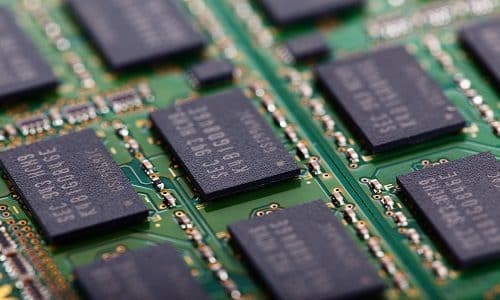The innovation is capable of high-data storage and faster computation as compared to the existng DRAM and SRAM technologies.

In a piece of exciting news for techies in India and around the world, the research team at IIT-Mandi has developed Magnetic Random Access Memory (MRAM), which claims to be faster, more energy-efficient and capable of storing more information in a smaller volume as compared to the existing data storing technologies.
The Spin-transfer torque-based nano spintronic device in which data is represented as a spin of electrons utilises the spinning electrons to transmit and process information. By harnessing this spin of electrons from the magnetic state leads to Spin-Transfer Torque-Magnetic Random Access Memory (STT-MRAM). So, unlike normal electronic devices that are driven by electron charges, the cutting-edge technology promises better storage capabilities than conventional electric charge-based RAM.
“Universal memory solutions must have high storage density, ultrafast operability and non-volatility, that is, able to retain data even when there is no power. This need is particularly relevant in modern times as the abundance of digital devices is expected to generate data volumes requiring 1 trillion hard drives at every instant by 2024,” said Satinder K Sharma, associate professor at School of Computing and Electrical Engineering, IIT Mandi. “Existing semiconductor RAM cannot meet the massive demands of data storage.”
Speaking about the benefits of the newly developed technology, he said, “STT-MRAM devices are non-volatile and have much higher storage densities and endurance than current CMOS based RAM technologies. Another advantage of these kinds of memory is that they can be integrated with conventional silicon-based memory technologies, which results in huge storage potential,”
Till now, the biggest hurdle with respect to the scalability of spintronics-based RAM had been the high operating current required. But with the STT-MRAM innovation, it seems this issue has now been resolved. “Our devices have very low switching current density and free-layer switching duration of less than three nanoseconds. This is a very promising start and further optimization will make them prospective candidates for next-generation RAM devices,” said Srikant Srinivasan, associate professor at School of Computing and Electrical Engineering, IIT Mandi.
Data science experts predict that the demand for memory capacity will outpace production by the end of 2020. Therefore, it is hoped that this demand will soon be met and computer data loss due to power supply interruptions will come to an end, hence ushering in cutting-edge technology for the next generation of computing devices.
Source: PTI







but people are moving to quantum computers.
best idea ever seen